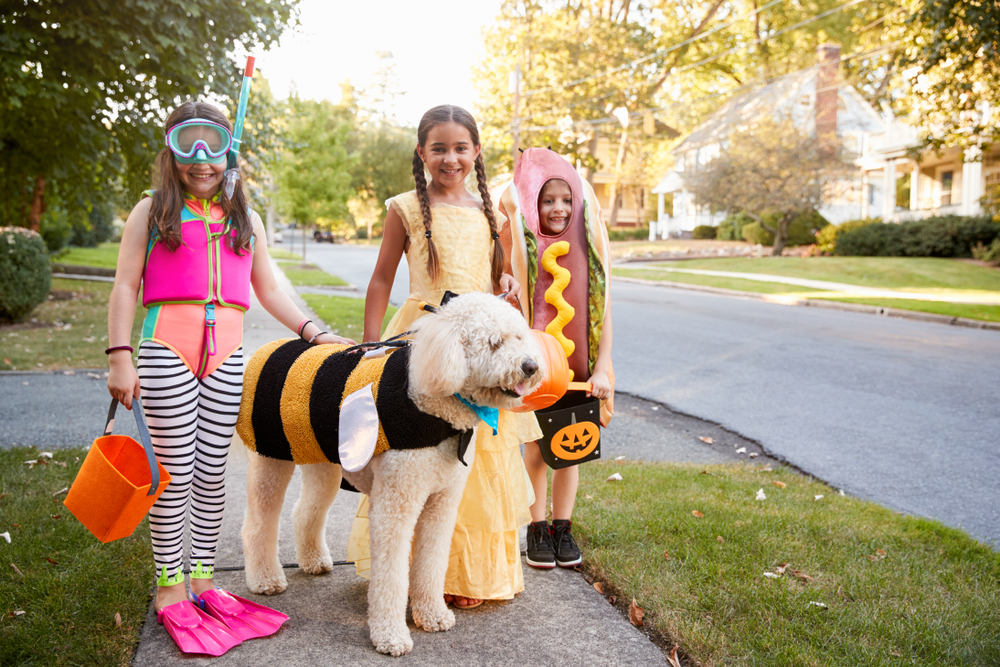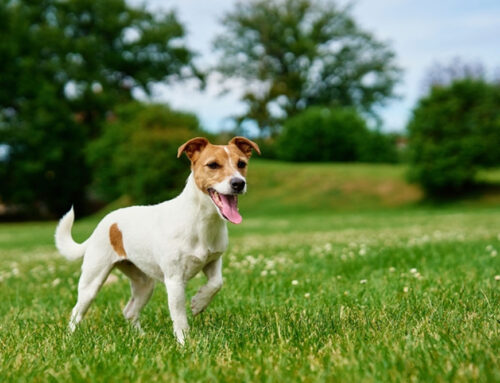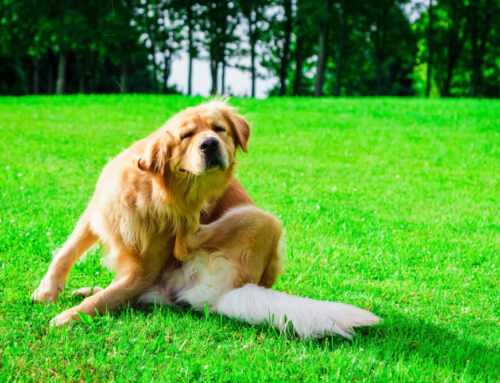The countdown to Halloween is on, and preparations are in full swing. Maybe you’ve noticed your cat watching as you string fake spider webs on the mantle, or you’ve spotted your dog gazing longingly at the candy bowl. Don’t be fooled this Halloween—true evil waits for pets around every turn. To recognize and prepare for the most frightening pet hazards, check out Oliver Animal Hospital’s countdown to Halloween.
Tastefully frightening decor—Halloween decorations and your pet
October’s arrival is often heralded by pumpkins on porches. During this decorative time, your pet’s home transforms overnight into a haunted mansion, and their yard is overcrowded with witch covens and skeleton conventions.
Pets can be divided in their response to these sudden shifts. They frequently react with one or both of the following:
- Fear and stress — Sensitive pets may be alarmed by gnarly faces, angry black cat silhouettes, and motion-sensing lights and sounds. Inflatable lawn characters are enormous to small pets, and they often move erratically, causing pets to startle or run away.
- Dangerous curiosity — Other pets may have an unhealthy love for your decorations, and see them as toys or edible objects. Dangling garlands, spider webs, and twinkling lights may attract cats, while dogs may find small pumpkins, tabletop decorations, and battery-operated toys worth investigating. Replace candles with artificial lights, to avoid accidental fires.
Consider your pet’s perspective and personality while selecting your Halloween decor. Ensure your decorations do not block access to your pet’s resources, such as food, water, litter box, or doggy door, and avoid any small decorations that may be ingested, or mistaken for toys.
Who are you supposed to be? Finding the right costume for your pet
If you haven’t found your costume by mid-October, you’re probably scrambling. If you enjoy dressing up your pet, you’ve likely had their costume for months. Now is the time to bring out, try on, and assess the costume for:
- Comfort — Does your pet enjoy wearing a costume? Some pets strongly dislike the sensation of something wrapped around their body, and may panic and try to escape.
- Fit — Too-tight clothing may restrict movement, while a loose fitting outfit could cause your pet to trip and fall.
- Choking hazards — Remove any dangling accessories, buttons, or ties that your pet may chew and swallow.
If your pet shows resistance or stress (e.g., excessive panting, drooling, restlessness, pinned ears, physical struggle), dress them in only a festive bandana or collar.
Dangerously sweet—keeping your pet safe around the candy bowl
As you stock up on candy for hungry trick-or-treaters—and a little for yourself—remember that many candy ingredients are dangerous for pets. Candy attracts dogs and cats for the same reasons as people—the shiny wrappers, small size, and sweet aroma are irresistible. Forgo displaying candy in bowls and dishes on counters or low tables, and instead keep them in a closed container, and stored out of reach.
While all candy can pose choking hazards, and cause an elevated blood glucose in your pet, be aware of these especially dangerous ingredients:
- Chocolate — Especially dark and bitter baking chocolate
- Xylitol — A dangerous sweetener that may also be labeled as birch sugar
- Raisins — Whole or chocolate covered raisins, or raisin paste in candy filling
- Grapes — Peeled grapes, which are often used in Halloween party games as fake eyeballs
- Macadamia nuts — Found in baked goods, or inside chocolate candies
Shiny foil and cellophane wrappers can resemble popular cat toys, and may be chewed and swallowed. Undigested wrappers can become lodged in the intestine, and require surgical removal.
Neighborhood characters—trick-or-treating and your pet

When Halloween night arrives, resist the temptation to let your pet greet trick-or-treaters. Many pets are unsettled by people in costume, and can panic, or react with fear-based aggression. Consider your pet’s surprise when they go to the door expecting human company, only to be met with a werewolf, a ghost, and a zombie.
Many pets go missing on Halloween night. Once pets have slipped their collar or slipped through an open door, they can be easily disoriented by the endless parade of costumes and lawn decorations. Ensure your pet is wearing current identification, and that their microchip registration is up to date. For the greatest peace of mind, confine your pet to a quiet room away from doors and windows during Halloween activities, and provide them with a puzzle toy or food-stuffed Kong to pass the time.
Don’t let Halloween sneak up on you this year. As you make your own spook-tacular plans, ensure you include your pet. By considering their perspective and safety, your Halloween night will end with only happy memories, and no haunting regrets. If your pet has ingested candy or another dangerous substance, contact Oliver Animal Hospital immediately.







Leave A Comment